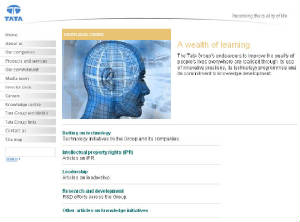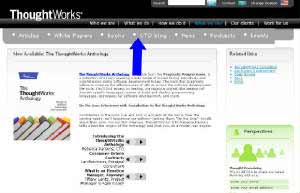It all started with consulting companies, then moved to software/technology companies and now is spreading to all types of companies. Thought leadership, simply put, is giving away content. This could be developed from what your leaders know, case studies or the musings of gurus and subject matter experts you hire.
Why do this? It drives traffic to your corporate website and enhances your company’s reputation as one that buyers may want to do business with. Think of thought leadership as stealth advertising and promotion. The content may not, and some say should not, mention your company. But the association is still made and by sharing your knowledge you build credibility.
The reason why consulting companies are the best of class in thought leadership is that they churn out intellectual capital every day. The simply repackage the content and make it easily available on their websites. When I worked for a Fortune 50 company, I got a free subscription to the McKinsey Quarterly. Each issue had great articles on a variety of business issues. McKinsey embraced the Internet and now you can access vastly more content from the McKinsey Quarterly. You have to register to access the content but it is worth it. Some content requires a fee based membership, but there is still lots of free content. One annoyance – you can’t save pdfs.
Let’s look at more examples:Thought Works LLC
ThoughtWorks is a private IT company based in the US. It is an innovative company that effectively uses Thought Leaderships concepts. Of note is that they use a variety of content media. They understand that shaping what they know into valuable thought leadership content is challenging. A useful technique is re-packaging. PR transcripts, recordings of leadership group discussions trade show presentations are more provide the core content. This content can be reformatted into articles, whitepapers, blogs and other media.
Companies other than consulting or IT companies are also using Thought Leadership concepts even if they don’t call it Thought Leadership. A great example is Tata Group in India. This innovative company has a segment on their website called “Knowledge Centre”:

Tata
They have an impressive, rich base of content on a wide variety of topics – leadership, technology, even the legal aspects of Internet keywords. While most of the content is web based, Tata could easily translate its content into other Web 2.0 media.
If you are now convinced that Thought Leadership is for you, here are some tips adapted from MarketingPros
- Define your organizational goals first. Do you want to drive revenue? Get buyer leads?
- Based on your goals, decide whether you want to provide the content for free and without any registration (many more people will use the content, but you won’t know who they are) or whether you want to include some kind of registration mechanism (much lower response rates, but you build a contact list).
- Think like a publisher by understanding your audience. Consider what market problems your buyer personas are faced with and develop topics that appeal to them.
- Write for your audience. Use examples and stories (everyone likes stories and they are a powerful business tool). Make it interesting.
- Choose a great title that grabs attention. Use subtitles to describe what the content will deliver.
- Promote the effort like crazy. Offer the content on your site with easy-to-find links. Think like ThoughtWorks. Add a link to employees’ email signatures-and get partners to offer links as well.
- To drive the viral marketing effects, alert appropriate reporters, bloggers, and analysts that the content is available, and send them a download link.
Now go out and let the world know what you are thinking!
Ed Konczal has an MBA from New York University's Stern School of Business (with distinction). He has spent the last 10 years as an executive consultant focusing on human resources, leadership, market research, and business planning. Ed has over 10 years of top-level experience from AT&T in the areas of new ventures and business planning. He is co-author of the book "Simple Stories for Leadership Insight," published by University Press of America.

I think this article under stresses the importance and relevance of Thought Leadership.
Thought Leadership is not about giving away articles. The material produced by the consultancies is a product and is given away for marketing but it is only the tip of the iceberg. There will be far more material produced that is not given away for free and actually defines the goals for Thought Leadership as a strategy.
The “Thought” is about exploring white space that products or services can occupy in the future, while Leadership is about action and establishing primacy.
Hence I would define Thought Leadership as; a 3 to 5 year strategy for creating and or protecting a prime space that products or services can occupy that will enhance the triple bottom line. It is executed through harmonised organisational behaviours and actions that influence non-governmental organisations, governments, policy makers, opinion formers and shapers.